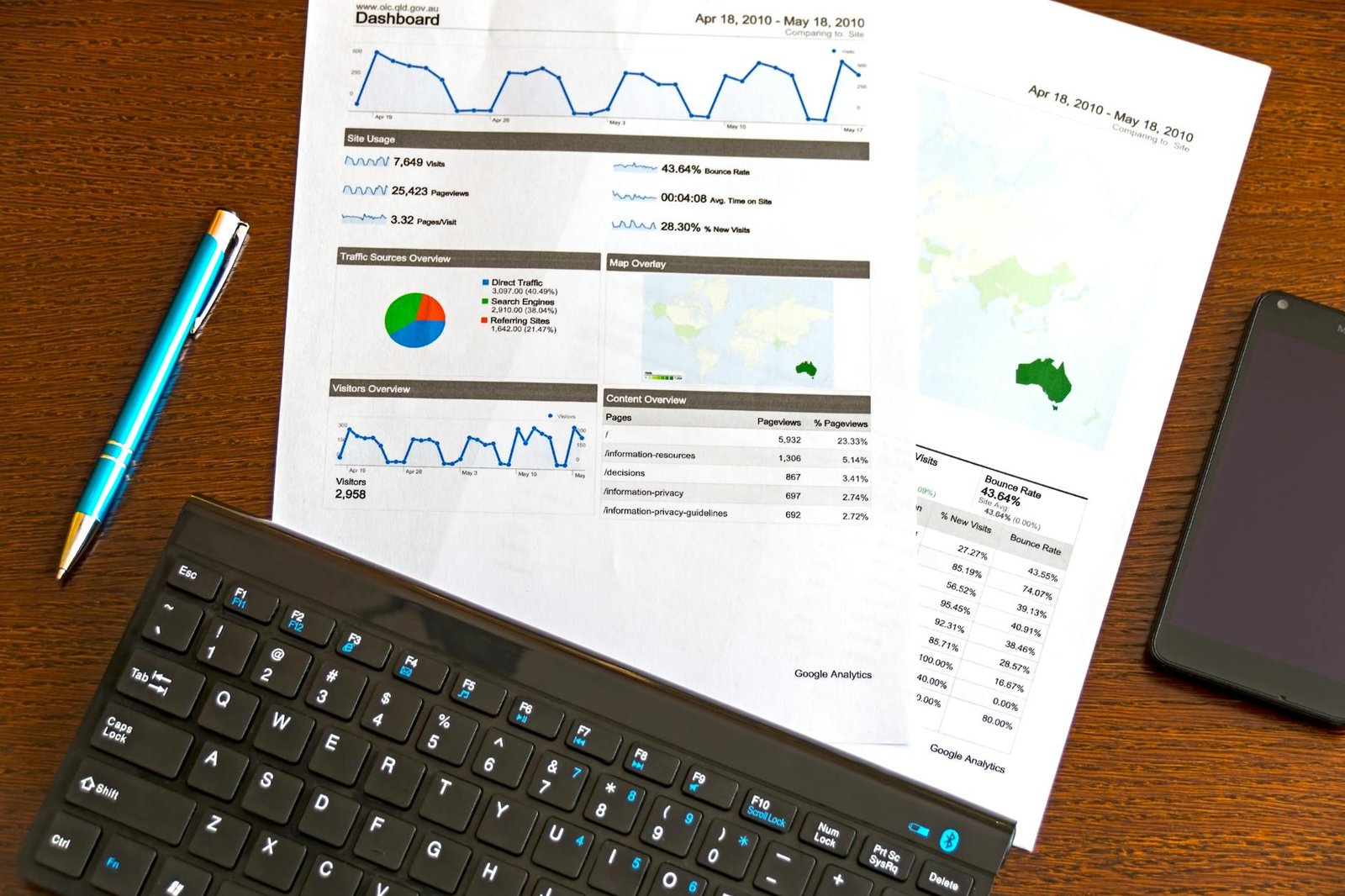Energy Marketing Analysis
Red Bull’s Marketing Strategy
Red Bull sure knows how to liven up the party. They’ve got a whopping 39.5% of the energy drink market share, according to Keyhole. But it’s not just about the drink; it’s about the thrill, the adventure, the vibe they sell. They’ve mastered the art of tying their brand to the pulse of energetic living—think of folks who thrive on action and adrenalin.
What’s their secret sauce? Dive into the world of user-generated content (UGC). Red Bull goes all out with events and competitions in the realms of extreme sports and gaming. It’s like a festival that never ends, pulling people in to be a part of something bigger. This isn’t just about hype; it’s about feeding an interactive circle of trust and loyalty. When fans create content, it adds an undeniable ring of authenticity and belonging, which in turn fuels brand commitment and pushes conversion numbers through the roof. They’ve set a high bar in rallying consumer engagement across any energy sector.
And then there’s the social media playground. Red Bull doesn’t just post pretty pictures—they jump into conversations, living right alongside their audience in real-time. This isn’t just a strategy; it’s a conversation where they’re always listening, always ready to tweak their game based on what fans say.
Customer Engagement Techniques
When it comes to attracting folks in the competitive energy scene, effective engagement is the name of the game. Here’s a peek into the crafty methods, Red Bull style:
| Engagement Technique | Description |
|---|---|
| User-Generated Content (UGC) | Fans become part of the brand story, enhancing participation and authenticity. |
| Event Sponsorship | Boosting their presence with sports events draws eyes and fosters a tight-knit community. |
| Real-Time Social Interaction | Social platforms aren’t just megaphones here. They foster real talks and build customer loyalty. |
These strategies aren’t just about flashing lights—they’re about connecting with people heart-to-heart and promoting clever, sustainable perks. Marketers have to keep tabs on what clicks with customers and turns them into die-hard brand fans. A keen eye on Customer Lifetime Value (CLTV) sheds light on what each customer brings to the table, predicts revenue, and refines marketing moves, as highlighted by ThoughtSpot.
For those hustlin’ in the energy sector, channeling similar vibes in their strategies can help them sync with customer passions and get aligned with what matters, sustainability-wise. Measuring Return on Investment (ROI) is key for grasping the profit story behind marketing adventures (ThoughtSpot) and finding the golden nuggets worth investing in for long-lasting engagement tactics.
BESS Implementation Success
Battery Energy Storage Systems, or BESS for those in the know, are kind of a big deal when it comes to pushing sustainable energy forward. Here, we chat about how Europe’s getting a grip on it, the hiccups in the process, and take a peek at how folks like Nissan UK and Tesla are leading the charge.
European Market Growth
Europe’s BESS scene is basically exploding. They’re on a roll with predictions saying the market’s gonna hit a growth rate of about 15% each year until 2030. This boom owes a lot to the hunger for a steadier power grid and plugging in more green energy, as pointed out in a report by the European Association for Storage of Energy (EASE).
| Year | Estimated Market Growth (%) |
|---|---|
| 2020 | Baseline Year |
| 2025 | 7% |
| 2030 | 15% |
Overcoming Implementation Challenges
Getting BESS up and running isn’t exactly a walk in the park, but nailing it can seriously cut energy costs by up to a quarter and beef up grid reliability, according to smart folks at McKinsey & Company.
Common Roadblocks and Clever Fixes:
- Sky-High Starting Expenses: Taking full advantage of government handouts and financial boost to cushion the blow.
- Tech Jigsaw Puzzle: Tag-teaming with local grid folks and rolling out state-of-the-art grid systems to keep everything in sync.
- Red Tape and Rules: Working the angles in the regulatory maze to make things smoother and quicker.
Why Breakin’ the Walls Pays Off:
| Benefit | Improvement Description |
|---|---|
| Cost Cuts | Saves up to 25% on energy bills |
| Grid Muscle | Steadies and powers up grid performance |
| Going Green | Slides more renewables into the mix |
Chuck in some fancy new tech, savvy maintenance, and a sprinkle of regulation magic, and you’re looking at a healthy BESS spread across Europe.
Case Studies: Nissan UK and Tesla
Getting a load of how big names like Nissan and Tesla are making waves with BESS gives a real-life flavor of how it’s done right.
Nissan UK
Nissan’s plant in Sunderland, UK, cranked up a 4 MW/4 MWh BESS setup. They tackled those hefty initial costs using government cash injections—showing how to fit storage systems into what’s already there.
Tesla
Tesla’s up to its usual tricks in Terhills, Belgium with a 10 MW/20 MWh BESS project. They teamed up with local power players and used top-tier grid systems to nail a smooth run.
Basically, these stories are a masterclass in planning and tweaking your setup to smash BESS deployment out of the park. If energy marketing’s your jam, scope out more info over on our energy marketing strategies section.
Marketing Key Performance Indicators
Keeping tabs on key performance indicators (KPIs) is like having a trusty compass for renewable energy companies and utility providers to get a grip on their marketing moves. Let’s break down four biggies in the marketing world: Customer Acquisition Cost (CAC), Customer Lifetime Value (CLTV), Return on Investment (ROI), and Return on Ad Spend (ROAS).
Customer Acquisition Cost (CAC)
Customer Acquisition Cost (CAC) is all about figuring out how much it takes to bring in a new customer. It’s all-inclusive, covering marketing, advertising, and sales bills. To get your CAC, just divide your total spend by the number of newbies you’ve nabbed.
Formula:
[ \text{CAC} = \frac{\text{Total Marketing and Sales Costs}}{\text{Number of New Customers Acquired}} ]
A lean CAC means you’re snagging customers without throwing money around like confetti. But if it’s sky-high, it’s time to tweak what’s not working. Renewable energy pros really need to keep CAC in check to stay in business for the long haul.
| Expenditure Type | Amount ($) |
|---|---|
| Marketing Costs | 15,000 |
| Advertising Costs | 10,000 |
| Sales Costs | 5,000 |
| Total Customers Acquired | 100 |
| CAC Calculation | 300 |
Customer Lifetime Value (CLTV)
Customer Lifetime Value (CLTV) peeks into how much green a customer might bring over time. You think about how often they buy, what they spend, how long they’ll hang around, and factor in stuff like discounts.
Formula:
[ \text{CLTV} = \text{Average Purchase Value} \times \text{Purchase Frequency} \times \text{Customer Lifespan} ]
Grasping CLTV helps in making savvy calls about how much to sink into new customers, keep the ones you’ve got, and tidy up your marketing. Upping CLTV translates to bigger loyalty and profit—golden for energy outfits.
| Metric | Value |
|---|---|
| Average Purchase Value | $400 |
| Purchase Frequency | 2 |
| Customer Lifespan (years) | 5 |
| CLTV Calculation | $4,000 |
Return on Investment (ROI)
Return on Investment (ROI) sizes up how fat the profits are relative to what you’ve spent. It’s a sanity check for marketing dollars.
Formula:
[ \text{ROI} = \frac{\text{Net Profit from Marketing Investment}}{\text{Cost of Marketing Investment}} ]
Being all about the numbers helps companies shift their cash to what’s clicking, going big on the good stuff, especially in the world of digital marketing for energy companies.
| Investment | Amount ($) |
|---|---|
| Total Revenue Generated | 50,000 |
| Marketing Cost | 10,000 |
| Net Profit | 40,000 |
| ROI Calculation | 4 |
Return on Ad Spend (ROAS)
Return on Ad Spend (ROAS) zeros in on how much dough your ads are bringing back, telling you if the ad game’s on point.
Formula:
[ \text{ROAS} = \frac{\text{Revenue from Ads}}{\text{Cost of Ads}} ]
Fine-tune those ad strategies and nail the right audience to keep ROAS on the up ‘n’ up. Doing this means happy vibes all around when it comes to marketing cash for energy campaigns.
| Advertising Expense | Amount ($) |
|---|---|
| Revenue Generated | 25,000 |
| Ad Spend | 5,000 |
| ROAS Calculation | 5 |
By regularly keeping an eye on KPIs, renewable energy companies can tweak and tune their marketing plans to ensure they’re clicking with customers and staying in the game long-term. If you’re itching for more, scope out our take on energy marketing strategies or skim through our stash on energy marketing solutions.
Solar Energy Marketing Strategies
To capture the attention of potential solar energy customers, companies must amp up their marketing game. Nobody wants the same old cookie-cutter pitch, right? So let’s breakdown what’s making people hungry for solar panels, how marketing has evolved, and why mixing it up is the magic potion.
Factors Driving Demand
Why are people buying into solar? Let’s get into it:
- Environmental Awareness: Folks are waking up to the buzz about climate change. Ditching coal and oil for green energy isn’t just hip – it’s becoming a necessity.
- Economic Incentives: Government high-fives come in the form of tax breaks and cash-back deals. Who doesn’t love a good deal just for saving the planet?
- Technological Bling: Better tech means solar’s sparkling brighter without burning a hole in your wallet.
- Energy Independence: Who wants to be stuck on the grid? More people want to unplug from old-school energy giants.
These are the juicy bits that should drive what solar companies say and do while spreading the word.
Traditional vs. Digital Marketing
Solar marketing’s not just limited to Instagram snaps or TV ads. Here’s how old-school and new-school can both hit the mark.
Traditional Marketing:
This is your paper, radio, and street billboard stuff. It shines when you want to catch the eye of folks not glued to a smartphone 24/7.
| Marketing Method | Why It Works |
|---|---|
| Print Advertising | Super for snagging local interest |
| Television | Casts a wide net for eyeballs |
| Outdoor Advertising | Grabs attention in everyday spots |
Digital Marketing:
Think hashtags, status updates, and inbox alerts. Digital gives you the scoop on who’s interested and why.
| Digital Strategy | Perks |
|---|---|
| SEO | Puts you on the Google map |
| Social Media Marketing | Chatting and engaging in real-time |
| Email Marketing | Keeping cash in the bank with cheap leads |
Integrated Marketing Approach
Blending old school and digital can be a killer combo when spreading solar love. Here’s why shaking it up works wonders:
- Consistent Branding: All your stuff looks and sounds the same – whether a physical flyer or a Facebook post.
- Cross-Promotions: Grab attention everywhere – from billboards to tweets.
- Unified Content Strategy: Craft unified stories that speak to what customers care about.
- Analytics Tracking: Nerd out on numbers to see what’s working and tweak away accordingly.
As solar keeps gaining followers, a smart mishmash of traditional and digital tricks will be key. Businesses might consider getting their feet wet at an energy marketing conference or trying out energy marketing services that speak to the renewable crowd.
AI in Marketing
Artificial Intelligence is shaking up how businesses market themselves, especially when it comes to renewable energy. By sticking AI and machine learning into the mix, companies are finding smarter ways to connect with clients and spruce up their marketing plans.
AI and ML Integration
AI and ML are like having a speed-reader for data. They help companies slice and dice huge chunks of info right away. This means businesses can get a grip on what folks like, what the buzz is about, and make choices based off this info (Grand Canyon University). For energy firms, this tech is handy for tweaking tactics fast and on point.
| AI Integration Perks | What’s In It For You |
|---|---|
| Zippy Data Processing | Crunch big sets of info to scoop up insights easily. |
| Smart Consumer Insights | Get the lowdown on what makes customers tick. |
| Quick Strategy Shift | Fine-tune marketing moves using live data. |
Personalization and Engagement
Thanks to AI, marketers can now put together content that speaks directly to each consumer’s heart. AI and machine learning tools help sniff out customer likes and predict what they’ll dig next, so businesses can serve up content that connects with them on a personal level (Grand Canyon University). This unique touch not only hooks more people but turns them into loyal followers.
Personalization Tricks:
- Personal Content: Shape what you’re saying to hit individuals’ sweet spots.
- Chatbots & Virtual Pals: Embrace AI-driven helpers for quick customer chit-chats and backup (Grand Canyon University).
- Alive Offers: Shift deals based on what users are into.
Predictive Analytics
AI’s crystal ball, aka predictive analytics, is a marketer’s tool for guessing what comes next in customer habits and big market shifts. By combing through old data, businesses can spot trends and decide which advertising methods will pack the most punch, thus squeezing the most out of their resources (Grand Canyon University).
| Predictive Analytics Stuff | What’s So Great About It |
|---|---|
| Future Sight | Catch what’s hot in the market to steer marketing game plans. |
| Smart Spending | Sink funds into ad methods that really pack a wallop. |
| Campaign Smarts | Gauge what’s working and tweak tactics as needed. |
Bringing AI into marketing lets energy outfits and utility companies better reel in customers and champion eco-friendly solutions. For more tips on marketing, head on over to our chatter on energy marketing strategies.
Successful Digital Marketing Campaigns
Digital marketing isn’t just about clicks and likes; it’s the secret weapon for making companies stand out, even in the renewable energy field. Here are some awesome examples where brands went above and beyond to make their mark.
American Express OPEN Forum
Back in 2007, American Express decided to be more than just a card in your wallet. They kicked off the OPEN Forum, inviting business bigwigs and experts to share their insights. This wasn’t just chit-chat; it became a powerhouse for snagging new card users. Sharing smart content doesn’t just build street cred—it keeps customers coming back for more tips and tricks.
Slack’s Word-of-Mouth Magic
Remember when word-of-mouth was just talking over the garden fence? Slack turned it into a Twitter sensation with “The Wall of Love” (@SlackLoveTweets). By shouting out users’ positive shout-outs, Slack not only grew its user base to over 8 million active peeps, but they also built a trust-filled community. When customers spread the love, your product becomes the talk of the town!
Dove’s Project #ShowUs
In 2019, Dove decided to shake up the media’s narrow view with Project #ShowUs. They showcased real women, leading to the biggest stock photo library focusing on female representation. This was more than pictures; it was stories that brought in 100% positive vibes for Dove. Turns out, when you champion a cause, customers can’t help but feel that warm fuzzy connection.
Red Bull Stratos Campaign
Epic doesn’t even begin to describe Red Bull’s 2012 stunt. Felix Baumgartner’s jump from space broke records and the internet with 6.8 million folks tuning in on YouTube. This campaign didn’t just make Red Bull a household name—it showed how jaw-dropping content can skyrocket a brand from the ordinary to the extraordinary.
Sephora’s Digital Innovation
Sephora mixed the best of online and offline shopping, letting beauty lovers try before they buy with their slick app. Using clever tech like AI and AR, customers could see how products looked on them without leaving the couch. Sephora’s blend of tech and personal touch ramped up conversion rates, making buying easier and more fun.
These stories show how daring and strategic digital marketing campaigns can draw attention and foster real connections. By borrowing a page from these playbooks, energy companies can craft campaigns that both resonate and innovate. For more bright ideas, have a look at our take on energy marketing strategies and digital marketing for energy firms.





















